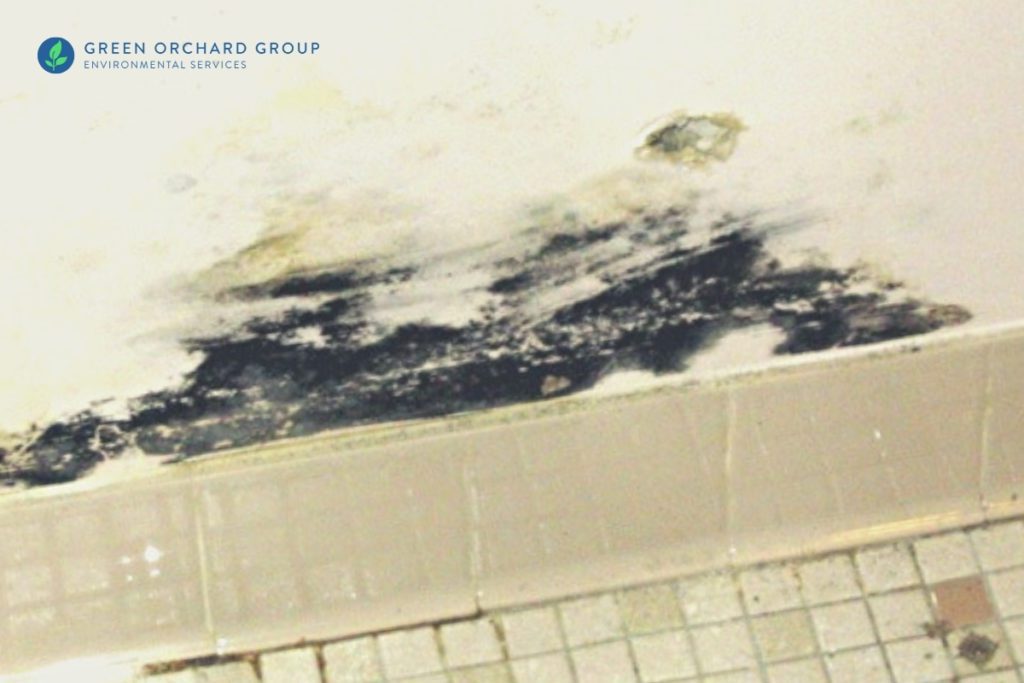
Article Sections:
Having black mold, or Stachybotrys chartarum, in your home is a terrifying thought for many Americans.
Due to somewhat exaggerated reporting about black mold by the media, many people think black mold is more dangerous than it actually is.
Based on the level of current research on S. chartarum, black mold is no more dangerous than other types of indoor mold.
Nevertheless, it’s still a good idea to familiarize yourself with what black mold looks like — in case you ever encounter it in your home after a leak or water damage.
What Is Stachybotrys Chartarum (a.k.a. “Black Mold”)?
Stachybotrys chartarum (S. chartarum) is a relatively uncommon, slow-growing, greenish-black species of mold that occasionally invades damp or water-damaged buildings.
For a mycologist looking under a microscope, this species can be identified by its characteristic phialides and conidia. But for the average person, S. chartarum is nearly impossible to differentiate from other species of black-colored mold.
Colloquially, Stachybotrys chartarum is often called “black mold” or “toxic mold.” The name “black mold” refers to its color, which many people believe is unique to S. chartarum. However, this is not the case — there are many species of mold that can be black in appearance but are not S. chartarum.
But for simplicity, we’ll refer to S. chartarum as “black mold” in the rest of this article.
What Does Black Mold Typically Look Like?
- Black or greenish-black color
- Shiny, slimy texture when wet
- Sooty, powdery texture when dry
- Tends to form patches of irregular circles
- Grows on surfaces with high cellulose content (e.g. wood, ceiling tile, drywall, wallpaper, etc.)
Black mold is known for its characteristic black hue after reaching maturity. However, the color black isn’t unique to Stachybotrys — people often confuse it with similar-colored molds like Cladosporium, Aspergillus, Alternaria, and Dreeschslera.
In earlier stages, black mold may appear more greenish-grey or greenish-black in color with fuzzy white edges.
The texture of black mold is shiny and slimy when it’s wet. This is usually the case because black mold requires a lot of moisture to grow and thrive. If the original source of moisture is eliminated (e.g. leak fixed, flooding cleaned up, etc.), the texture of black mold may appear more sooty and powdery.
Black mold can also have a powdery surface texture during sporulation — when it’s forming spores.
Lastly, if you’re trying to identify black mold at home, look for dark patches of irregularly shaped circles. Although this type of growth pattern isn’t a telltale feature of black mold, it can help narrow down the suspects.
Black mold also tends to grow on surfaces with high cellulose content, such as wood, paper, cardboard, ceiling tile, drywall, and wallpaper. It does not grow on nonporous surfaces like plastic, vinyl, or ceramic tiles.
Pictures of Black Mold (Stachybotrys Chartarum)
Closeup Images of Black Mold

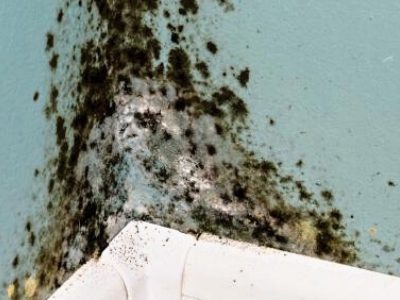
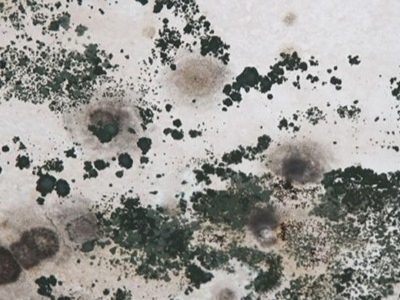
Black Mold on Walls
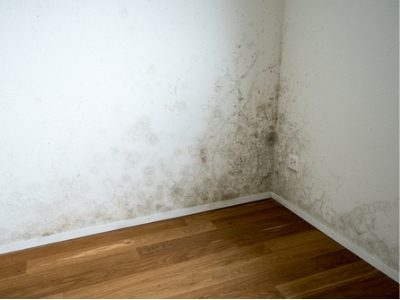
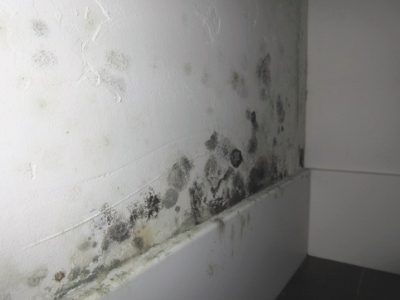
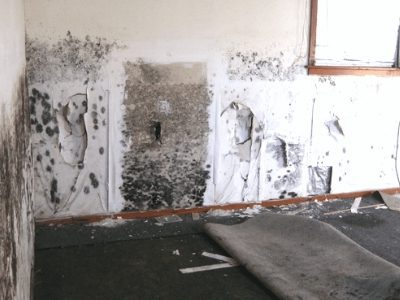
Black Mold on Wood
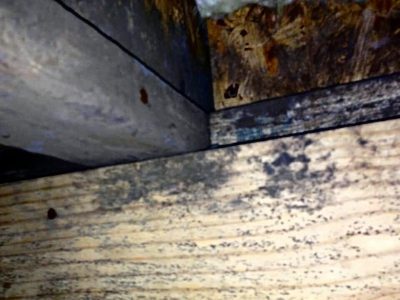
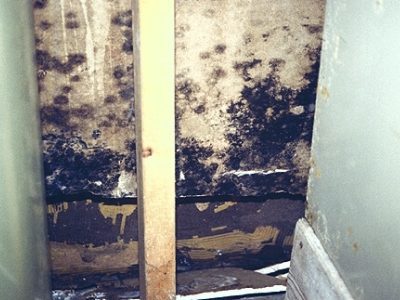
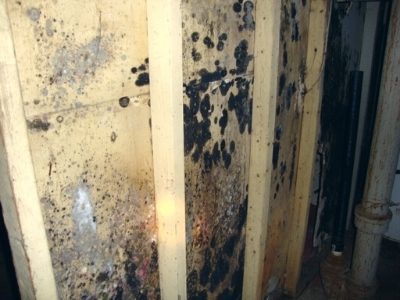
Black Mold on Ceilings

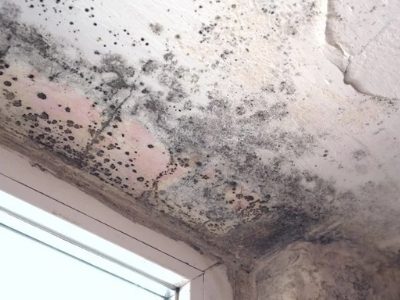
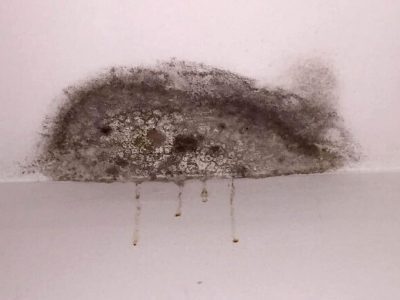
Black Mold in Bathrooms

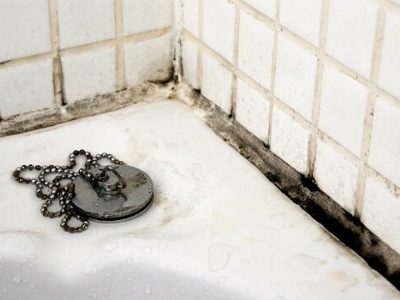
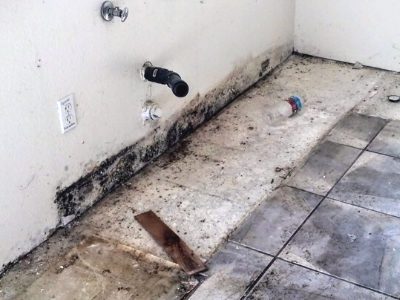
Is Black Mold in Your Home Dangerous?
The other common name for Stachybotrys chartarum, “toxic mold,” comes from the belief that this species of mold is particularly dangerous to human health.
That’s because black mold produces chemicals called mycotoxins, which can cause nonspecific health symptoms associated with sick building syndrome. It has also been suspected of causing idiopathic pulmonary hemorrhage among infants although this has not been scientifically proven.
Aside from possible toxicity, black mold (or any indoor mold for that matter) produces spores that can cause upper respiratory reactions resembling allergies or asthma.
For this reason, the CDC considers all types of indoor mold to be hazardous and recommends prompt and safe removal.

Certified Mold Specialists in NYC
Green Orchard Group is a leading environmental health & safety services firm based in New York City.
Our team of certified mold inspection and remediation specialists are seasoned experts at identifying, cleaning, and safely removing any type or amount of mold.
Our service area covers all 5 boroughs of New York City (Manhattan, Brooklyn, Queens, the Bronx, and Staten Island) as well as parts of New York State, New Jersey, Connecticut, and the Greater Tri-State Area.
If you have concerns about black mold — or any mold — in your home, feel free to drop us a line! We’re happy to answer questions, give advice, or provide recommendations.
